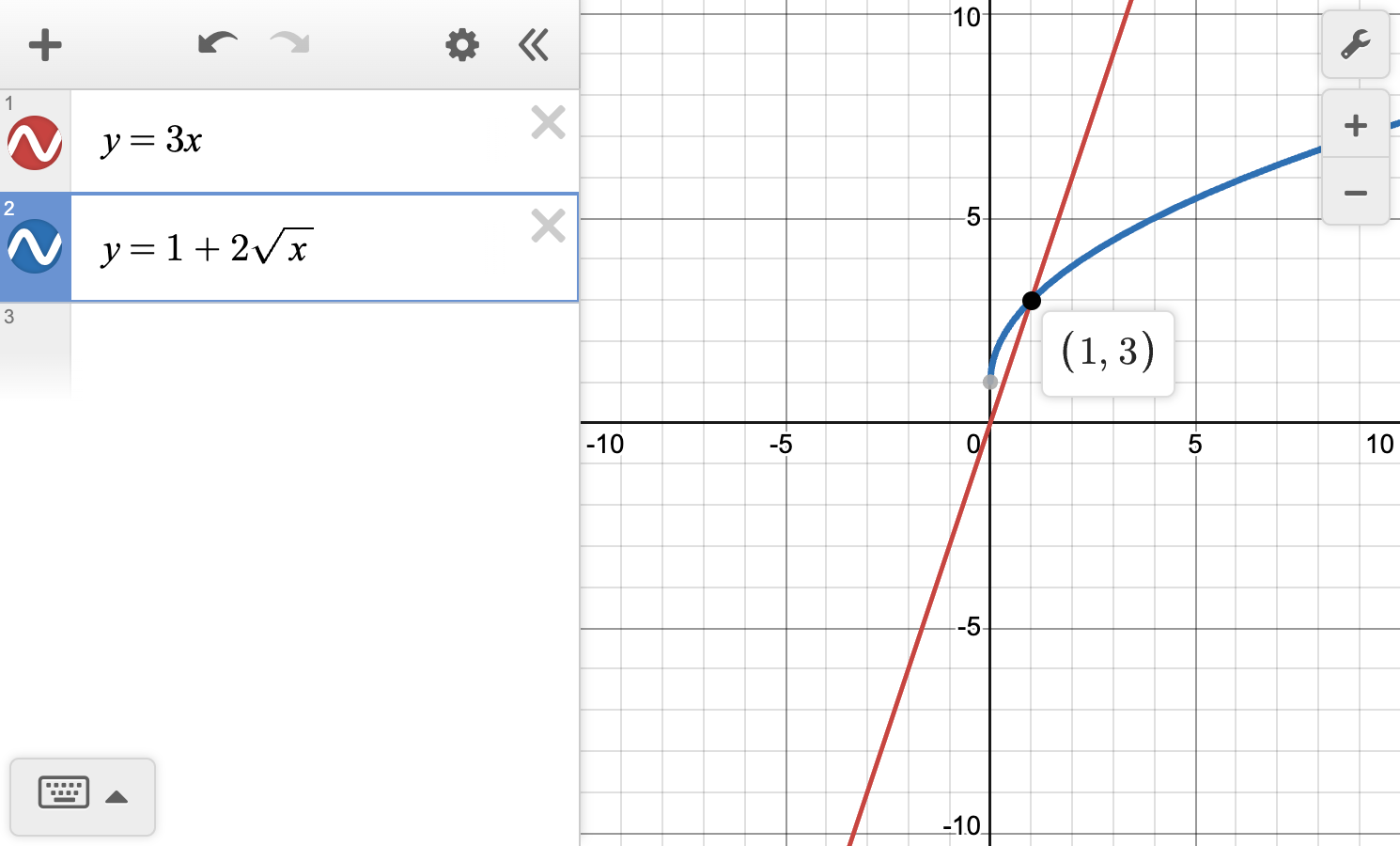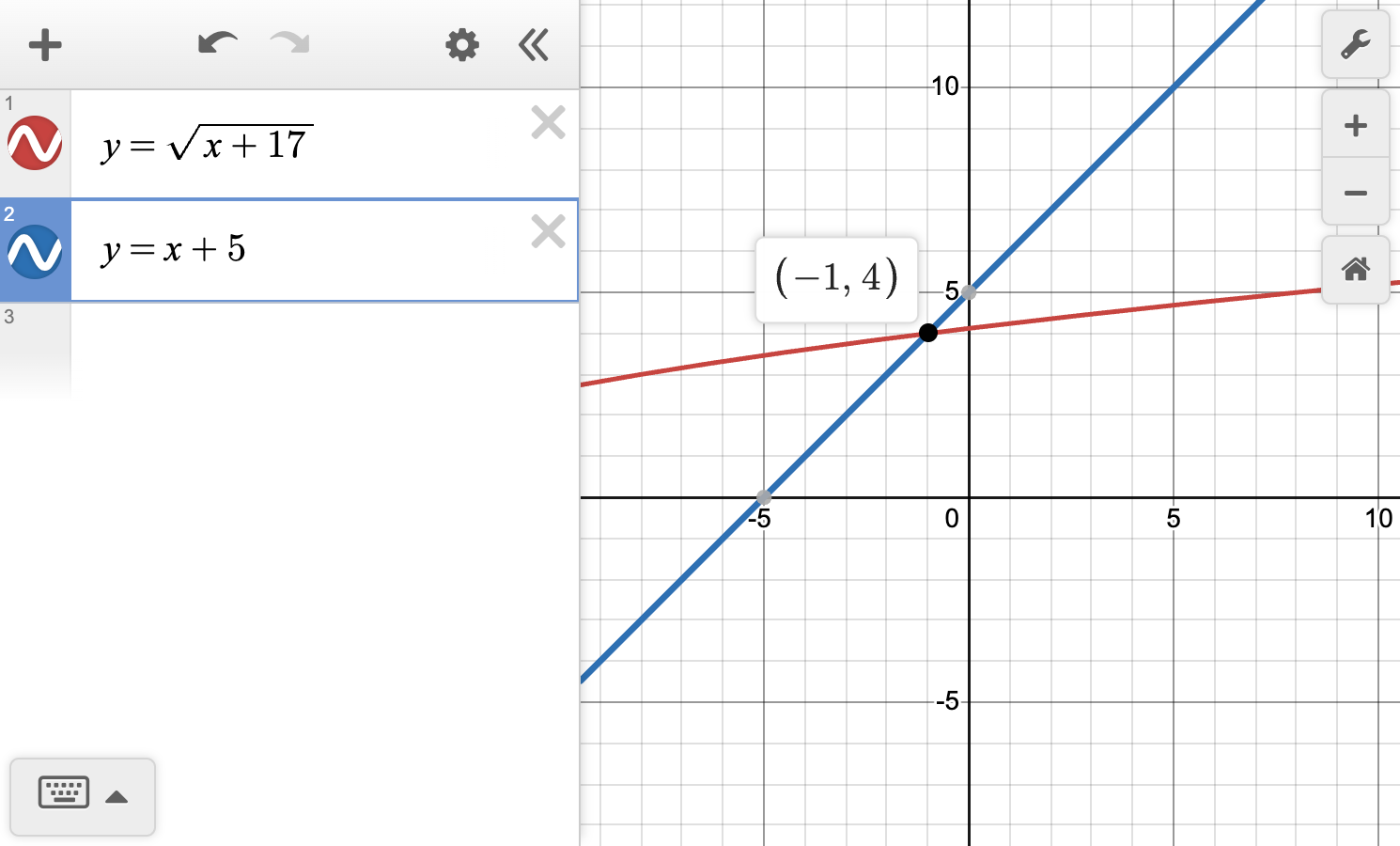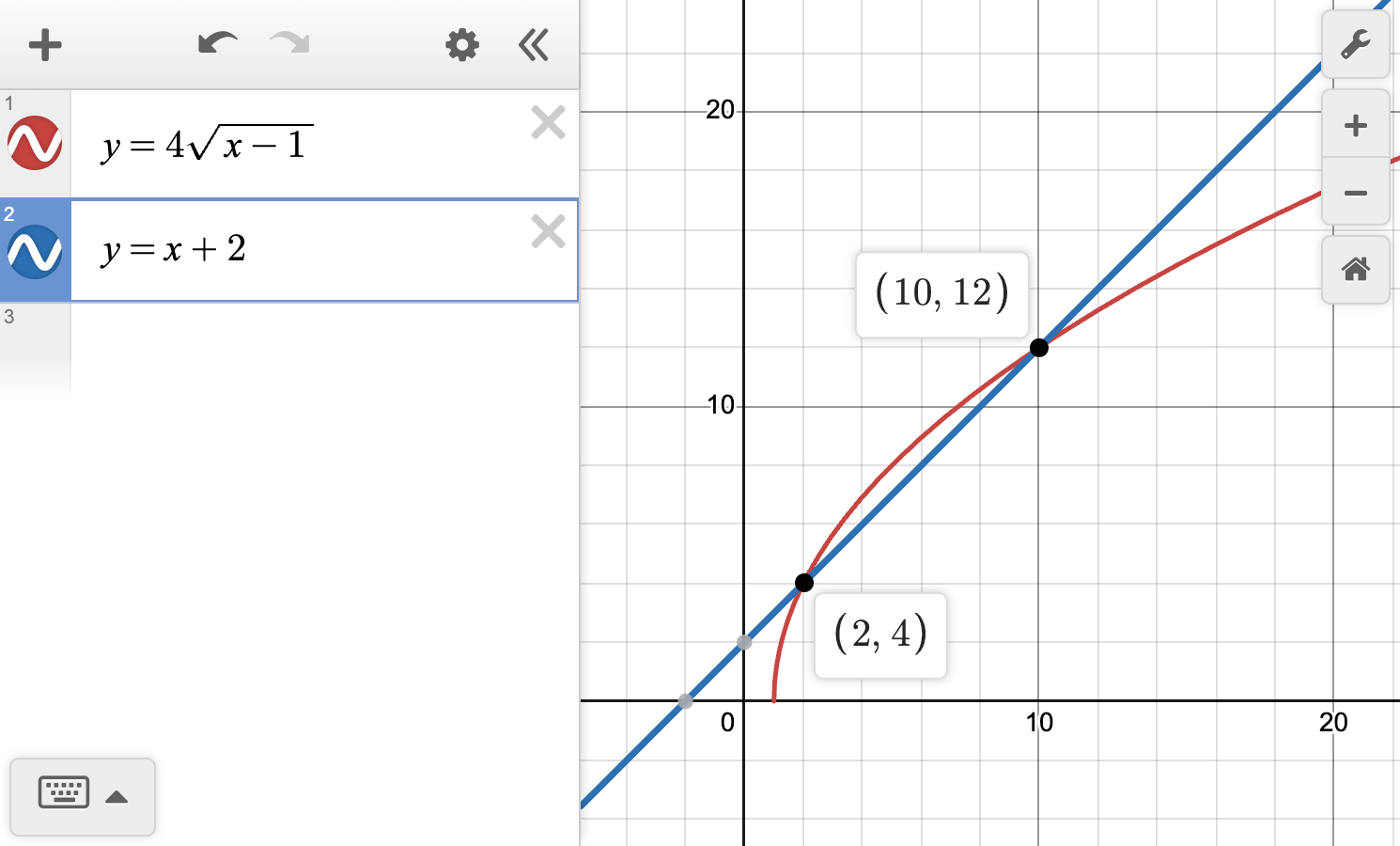4.06 Solve radical equations
Solve radical equations
For example, when solving the equation \sqrt{x+4}=5, the solution must be in the interval x\geq -4 as this is the domain for which the radical is defined.
In addition, the square root of any non-negative value is always non-negative. This means an equation such as \sqrt{x-5}=-2 has no solutions as it is equal to a negative value.
When solving questions with real life applications, we also need to ensure we have viable solutions, which make sense within the context of the question. A non-viable solution does not make sense within the context of the question, such as a negative value when we are solving for the length of a physical object.
Exploration
Asha solves the following radical equation and shows her work:\sqrt{x+18} = x+6
| 1 | \displaystyle \sqrt{x+18} | \displaystyle = | \displaystyle x+6 | Given equation |
| 2 | \displaystyle x+18 | \displaystyle = | \displaystyle (x+6)^2 | Square both sides |
| 3 | \displaystyle x+18 | \displaystyle = | \displaystyle x^2+12x+36 | Distribute the parentheses |
| 4 | \displaystyle 0 | \displaystyle = | \displaystyle x^2+11x+18 | Subtract x+18 from both sides |
| 5 | \displaystyle 0 | \displaystyle = | \displaystyle (x+2)(x+9) | Factor the quadratic expression |
Asha then states the solutions are x=-2 and x=-9.
Shown below is the graph of the system of equations represented by the radical equation: y = \begin{cases} \sqrt{x+18} \\ x+6 \end{cases}
- Algebraically check the given solutions to the equation \sqrt{x+18}= x+6.
- Based on the graph, what is the solution the to the system of equations formed by the equation \sqrt{x+18} = x+6?
- Why do you think Asha obtained an additional solution?
When solving radical equations, it is possible to have an extraneous solution. This is why checking solutions to radical equations is an important part of solving radical equations.
We can use substitution to verify solutions algebraically. We can graph a system of equations by hand or with technology to verify solutions graphically.
When solving equations involving radicals with higher indices, we can use inverse operations in the same way we do when solving equations with square root expressions. It's important to note that radical expressions with odd indices do not have domain restrictions. This will prevent the emergence of extraneous solutions.
Examples
Example 1
Solve the following equations:
\sqrt{y}+5=9
\sqrt[3]{4x-9}=-1
Example 2
For each of the following equations:
- Solve each equation for x and identify any extraneous solutions
- Write the equation as a system of equations
- Graph each system of equations
3x=1+2\sqrt{x}
\sqrt{x+17}=x+5
4\sqrt{x-1}=x+2
Example 3
The radius, r, of a cone with a height that is twice its radius is given by r = \left(\dfrac{3V}{2 \pi}\right)^{\frac{1}{3}}
Nirmal is studying an underwater volcano with a height that is roughly twice its radius. Solve for the volume, V, of the volcano if it has a radius of 1.3\text{ km}. Round your answer to one decimal place.
To solve radical equations, we can:
- Use inverse operations to solve, including raising both sides to a power
- Rewrite the equation as a system, then graph the system and identify the x-values of any points of intersection
- Verify the reasonableness of solutions and check for extraneous solutions
When solving radical equations, it is important to algebraically substitute solutions into the original equation to identify whether solutions are valid or extraneous.
We can also verify solutions by making connections to the graphs of the related equations.


